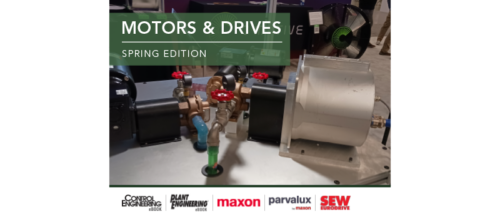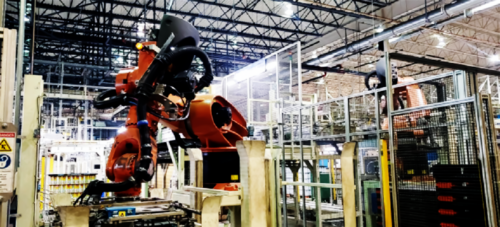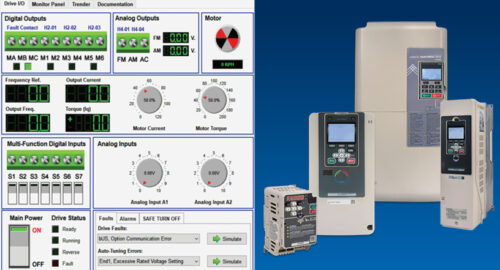European motor efficiency developments
Although an effective date isn’t expected before 2011, mandatory minimum energy performance standards (MEPS) for electric motors are coming to Europe in 2009. This will promote energy-efficient (EE) motor systems that can save up to 30% of the 70% of industrial electricity used by motors, according to Prof.
Although an effective date isn’t expected before 2011, mandatory minimum energy performance standards (MEPS) for electric motors are coming to Europe in 2009. This will promote energy-efficient (EE) motor systems that can save up to 30% of the 70% of industrial electricity used by motors, according to Prof. Aníbal T. de Almeida, Electric Engineering Dept., University of Coimbra, Portugal.
At the recent Motor Summit `08 (Zurich, Switzerland), Prof. de Almeida presented details of a study prompted by the European Union’s Ecodesign Energy-using Products (EuP) directive, which has spurred the upcoming regulations. The study’s focus was to find ways to the lower life-cycle cost (LCC) and environmental impact of electric motors in the 0.75-375 kW (1-500 hp) range. Comprehensive analyses included material costs, energy and other resources consumed during use-phase, and recycling/reuse requirements.
Key findings show significant environmental impact reduction from replacing IE1 motors with more efficient IE2 or IE3 class motors. This refers to new, globally harmonized motor efficiency classes defined in the IEC 60034-30 standard—namely, IE1-standard, IE2-high efficiency, and IE3-premium efficiency classes.
Lower life cycle cost would result at a relatively low number of annual motor operating hours. Depending on electricity costs, this occurs around 2,000 hr at 0.035€/kWh (lowest cost analyzed), and around 1,000 hr at 0.075 €/kWh (or 0.105 $/kWh). The latter is a more realistic figure given the upward trend of electricity costs, and is more in line with U.S. electricity prices at current exchange rates.
Induction motors targeted
Induction motors are the main target of energy-efficiency efforts due to their huge installed base and production numbers. They represent 87% of ac motors sold in the EU, according to de Almeida. However, brushless permanent magnet (PM) electronically commutated motors were also analyzed, he says, because of their much higher efficiency than induction motors and increasing importance in the lower power range of 0.75-7.5 kW. Brushless PM motors have great potential to reduce environmental impact and can realize lower life cycle costs at approximately 1,800 operating hours/year.
Study results predict large electricity cost savings in 2020 by introducing mandatory MEPS for induction motors produced in (or imported into) the EU in one of three scenarios:
12 terawatt-hour (TWh) savings if motors in the 0.75-200 kW range meet or exceed IE2 efficiency level after Jan. 1, 2011.
15 TWh savings by implementing scenario 1, and if motors in the 7.5-200 kW range meet or exceed IE3 efficiency level after Jan. 1, 2015.
18 TWh savings by implementing scenario 1, and if motors in the 0.75-200 kW range meet or exceed IE3 efficiency level after Jan. 1, 2015.
Additional electricity savings of 190 gigawatt-hour (GWh) in scenario 1 and 306 GWh (scenario 2 or 3) would accrue in 2020 from extending MEPS up to 375 kW, as covered by IEC 60034-30. Total savings potential is even higher, since complete replacement of motors takes 20 years, notes de Almeida. “Full impact of MEPS with IE2 level would only be achieved in 2030. A 20-year replacement period also would apply to IE3 level MEPS if initiated in 2015.”
The U.S. leads Europe in the MEPS arena. For example, already regulated EPAct motors fit into class IE2, and NEMA Premium motors (on record for MEPS regulation in 2011) fit into class IE3.
ONLINE EXTRA
For more details about the topics described above, see:
“Motor energy-efficiency developments: recycling, efficiency classes”
Also see related articles:
“Motor Summit 2008 preview”
“Enhancing motor harmony“
Author Information
Frank J. Bartos, P.E., is a Control Engineering consulting editor. Reach him at braunbart@sbcglobal.net .
Do you have experience and expertise with the topics mentioned in this content? You should consider contributing to our CFE Media editorial team and getting the recognition you and your company deserve. Click here to start this process.






